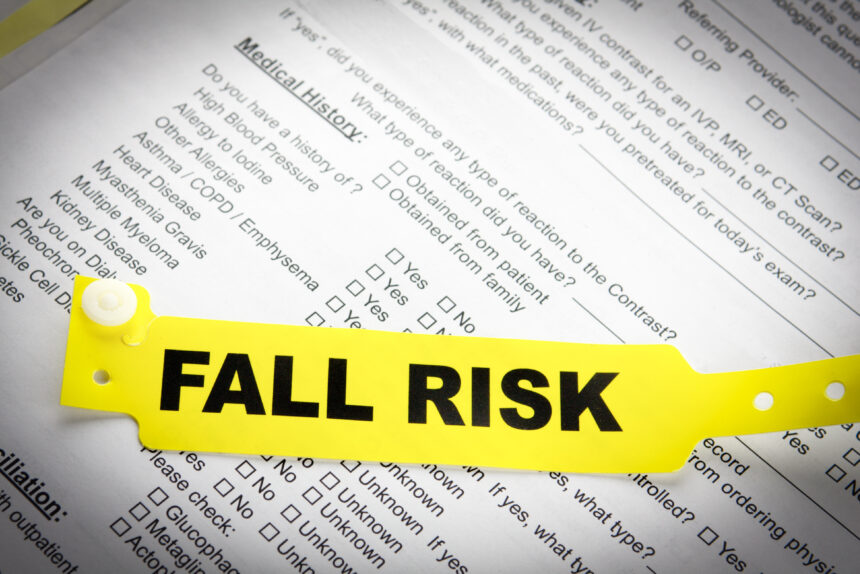Our Dementia Fall Risk PDFs
Our Dementia Fall Risk PDFs
Blog Article
Getting The Dementia Fall Risk To Work
Table of ContentsThe Facts About Dementia Fall Risk UncoveredThe 6-Second Trick For Dementia Fall RiskA Biased View of Dementia Fall RiskNot known Details About Dementia Fall Risk
An autumn danger evaluation checks to see just how likely it is that you will certainly fall. The assessment usually consists of: This includes a collection of concerns concerning your general health and if you've had previous drops or issues with balance, standing, and/or walking.Treatments are referrals that may decrease your risk of dropping. STEADI consists of three steps: you for your threat of falling for your danger factors that can be boosted to try to avoid drops (for example, balance problems, damaged vision) to decrease your threat of falling by using reliable strategies (for instance, offering education and learning and resources), you may be asked a number of inquiries consisting of: Have you fallen in the past year? Are you worried concerning falling?
After that you'll take a seat again. Your provider will certainly check the length of time it takes you to do this. If it takes you 12 secs or more, it might mean you go to higher danger for a loss. This test checks toughness and balance. You'll rest in a chair with your arms crossed over your breast.
The placements will get harder as you go. Stand with your feet side-by-side. Move one foot halfway onward, so the instep is touching the big toe of your other foot. Relocate one foot fully in front of the various other, so the toes are touching the heel of your various other foot.
See This Report about Dementia Fall Risk
Most drops occur as a result of numerous adding aspects; consequently, taking care of the threat of falling begins with identifying the factors that add to drop danger - Dementia Fall Risk. Some of the most pertinent danger elements include: Background of previous fallsChronic medical conditionsAcute illnessImpaired stride and equilibrium, lower extremity weaknessCognitive impairmentChanges in visionCertain high-risk medications and polypharmacyEnvironmental elements can likewise raise the danger for drops, consisting of: Inadequate lightingUneven or harmed flooringWet or unsafe floorsMissing or damaged hand rails and get hold of barsDamaged or incorrectly equipped devices, such as beds, mobility devices, or walkersImproper use assistive devicesInadequate supervision of the people staying in the NF, including those that show aggressive behaviorsA effective fall risk administration program requires a comprehensive medical evaluation, with input from all members of the interdisciplinary team

The treatment plan should also consist of interventions that are system-based, such as those that promote a risk-free atmosphere (appropriate illumination, hand rails, get hold of bars, etc). The effectiveness of the treatments must be evaluated regularly, and the care strategy changed as necessary to mirror adjustments in the autumn danger assessment. Applying a fall threat monitoring system making use of evidence-based best method can reduce the frequency of drops in the NF, while limiting the possibility for fall-related injuries.
The 2-Minute Rule for Dementia Fall Risk
The AGS/BGS standard suggests More Bonuses screening all grownups matured 65 years and older for loss risk annually. This screening contains asking clients whether they have dropped 2 or more times in the previous year or sought clinical focus for a fall, or, if they have not dropped, whether they feel unstable when strolling.
People that have actually dropped as soon as without injury ought to have their balance and gait examined; those with stride or balance abnormalities ought to obtain extra assessment. A background of 1 autumn without injury and without stride or equilibrium problems does not call for more assessment beyond continued yearly loss danger screening. Dementia Fall Risk. A loss threat assessment is needed as component of the Welcome to Medicare exam

The Main Principles Of Dementia Fall Risk
Recording a falls background is just one of the quality indications for autumn avoidance and management. A critical part of threat analysis is a medication review. Numerous courses of drugs enhance autumn threat (Table 2). copyright medications specifically are independent forecasters of drops. These medications often tend to be sedating, change the sensorium, and hinder equilibrium and gait.
Postural hypotension can usually be reduced by reducing the dose of blood pressurelowering drugs and/or quiting medications that have orthostatic hypotension as a negative effects. Use of above-the-knee support hose pipe and copulating the head of the bed raised may also minimize postural reductions in blood stress. The recommended aspects of a fall-focused checkup are shown in Box 1.

A TUG time greater than or equal to 12 secs recommends Full Report high autumn danger. Being incapable to stand up from a chair of knee elevation without utilizing one's arms shows enhanced loss risk.
Report this page